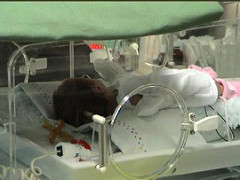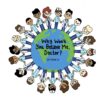Beeping machines, bright lights, and rows of incubators—welcome to the NICU (neonatal intensive care unit), a special place found in every hospital where the smallest and youngest patients stay. Infants fit the NICU perfectly—being in a special place requires special care. New technologies that can improve care for patients in the NICU, such as the Pea Pod and LifeNest, are being used in hospitals around the world.
Image Source: Photodisc
Doctors have started using the Pea Pod, a device that looks like a mini MRI machine. It is used for measuring infants’ body composition. The Pea Pod is able to determine the percentage of body weight that is fat and the percentage that is lean body mass by using air displacement. A baby is placed inside the machine’s heated chamber for about two minutes for measurement. Calculations are then made and printed out. This process is then repeated over and over, until the infant is ready to be discharged from the hospital, to keep track of the infant’s growth. By tracking growth, doctors can better address infants’ individual nutritional needs. This especially helps premature babies (preemies), since they need to make up for the time they could have spent growing in the womb.
Another invention that will benefit young patients in the NICU is the LifeNest. LifeNest is a unique mattress that is designed to help improve sleep cycles and head shape development for preemies. The oval-shaped netting in the center of the mattress helps reduce pressure on various parts of an infant’s body, including the head. This reduces the chances of developing pressure sores (a skin injury caused by constant pressure) and head flattening (plagiocephaly). Cases of head flattening have increased in the last two decades or so, since people started placing babies on their backs to lower the risk of sudden infant death syndrome.
The Pea Pod and LifeNest are just two new technologies that are currently being used to help infants in need. Of course, there will be new technology developed in the future that will improve and eventually replace old technology. But whether now or in the future, one thing will never change: new technology for the NICU will help nurture our future generations.
Feature Image Source: incubator by mono EA










